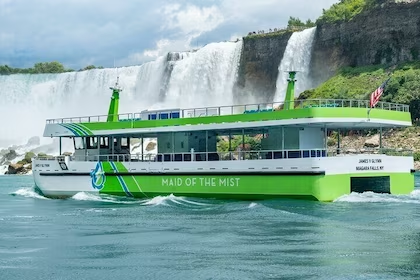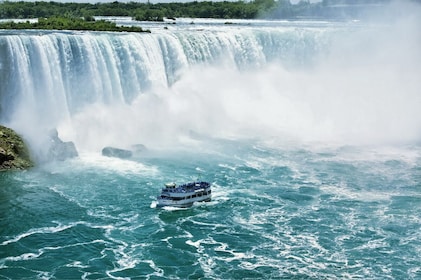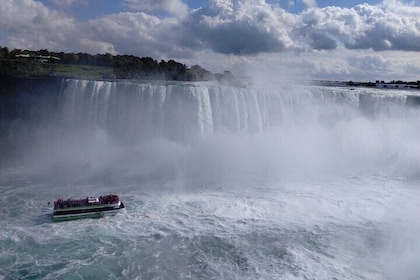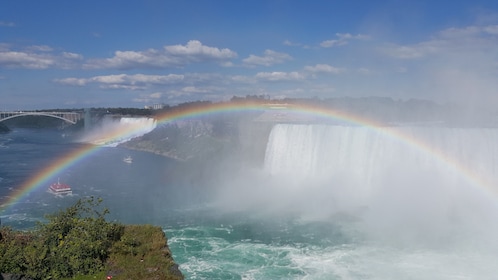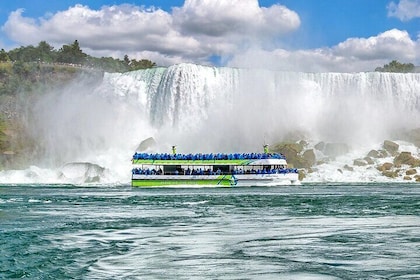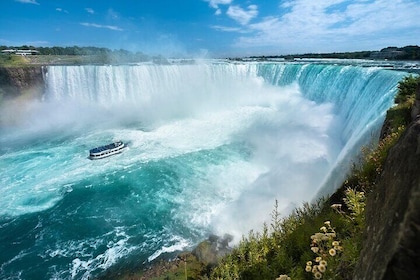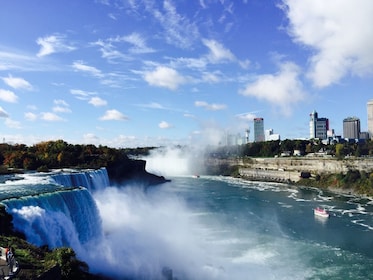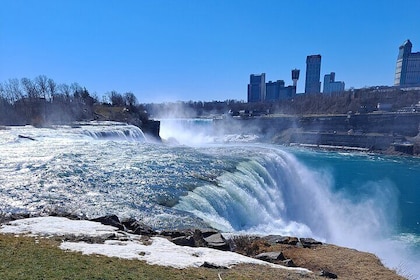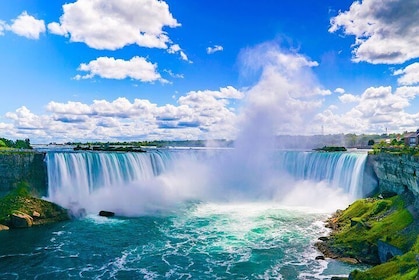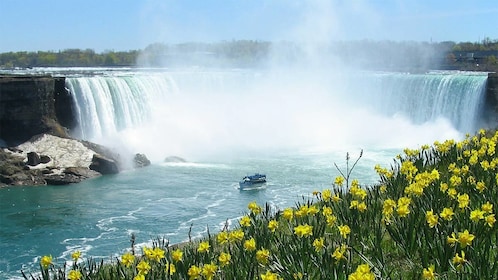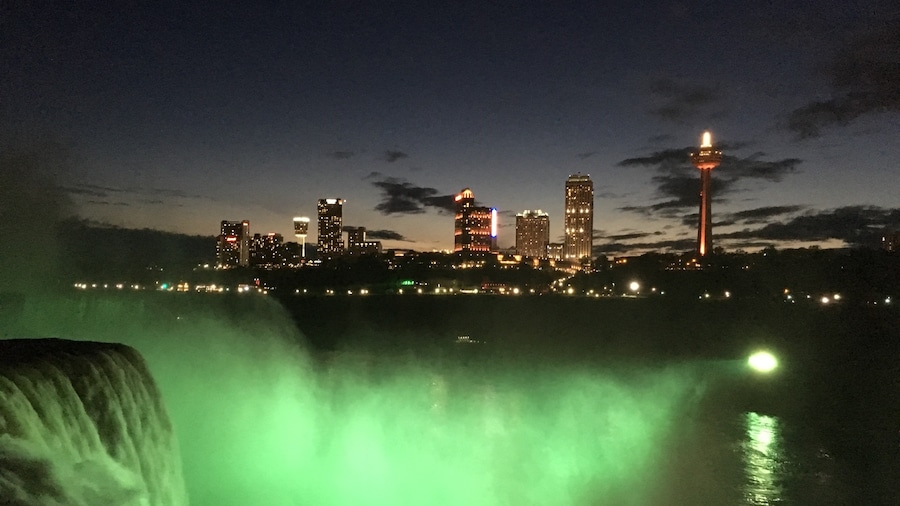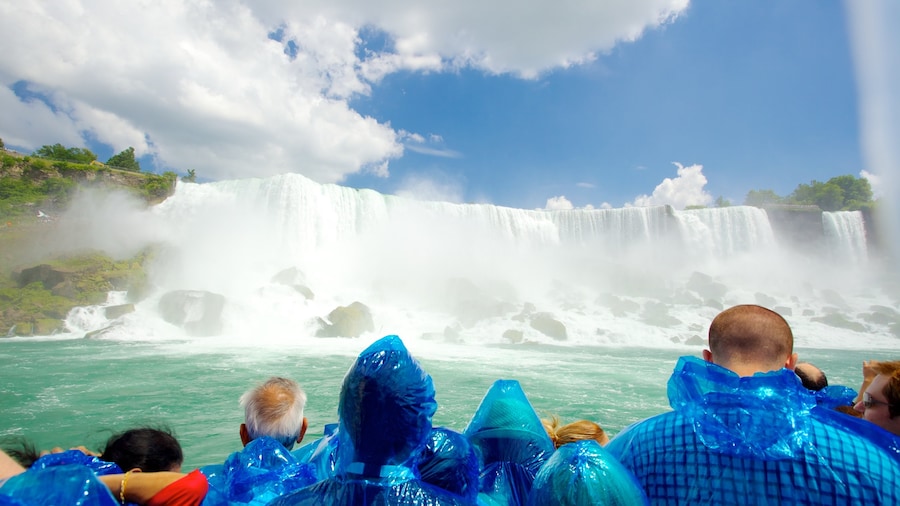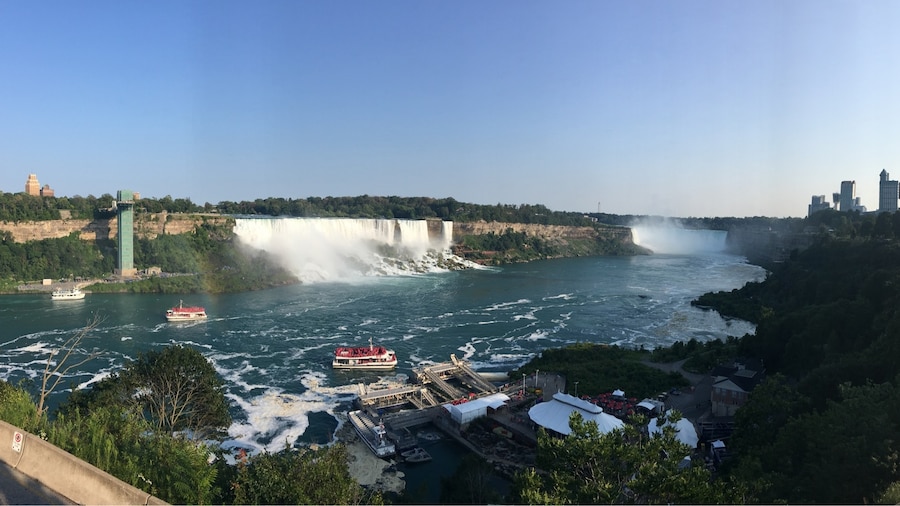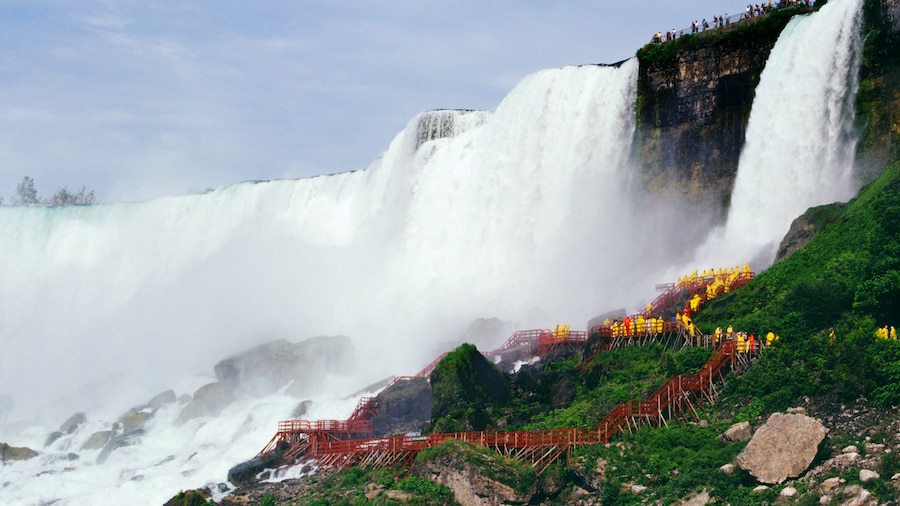Walk, cycle, or drive across the border and enjoy an unimpeded view of Niagara Falls.
The Rainbow Bridge was built between 1940 and ’41 to replace the Falls View Bridge, which was also known as “Honeymoon Bridge.” It collapsed in January 1938, the result of an ice jam. The new bridge was constructed atop 50-foot (15-meter) abutments to avoid a repeat of the disaster. It is 950-feet (290-meters) long and sits 202 feet (62 meters) above the Niagara River. The bridge is on the border of Canada and the USA.
The origin of its name is lost in history, although the steel arc that supports the bridge offers one potential explanation. From Horseshoe Falls on the Canadian side, the sight of a rainbow in the mist following the arc of the bridge is another explanation, especially appealing to the romantic.
The bridge is accessible to passenger vehicles, bicycles and pedestrians from each side, with a vehicle toll paid upon leaving the U.S. Pedestrians pay a small toll as they leave Canada.
Canadian and U.S. citizens who want to cross the Niagara River need a valid passport, enhanced (electronic chip) driver’s license, or Nexus card. The latter is available to those who frequently cross the border. Visitors from countries requiring a visa for visiting the U.S. or Canada must also have this ready to show.
If you have time, walk across the bridge in either direction for panoramic views of the American and Horseshoe falls. The river itself is also a great sight, with powerful currents and whirlpools indicating the awesome power of nature.
Stop and have your photo taken with one foot in Canada and one in the USA. Head to the bridge on a Friday or Sunday night between May and early September for the best vantage point for the nightly fireworks show above the falls. Be sure to take your passport or photo ID even if you are just taking in the views and intend to return to the same side.





